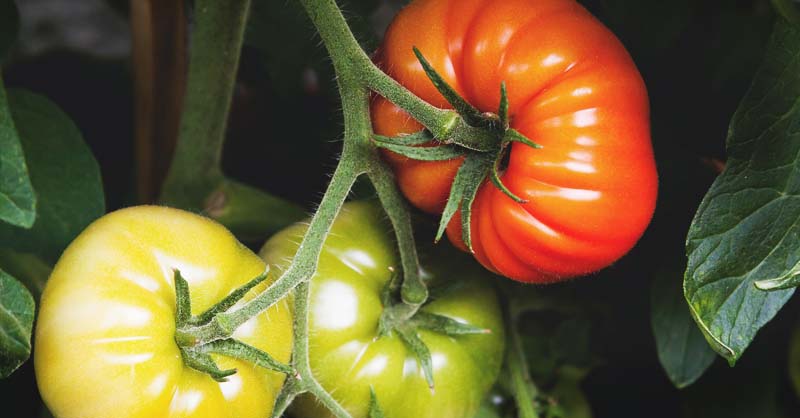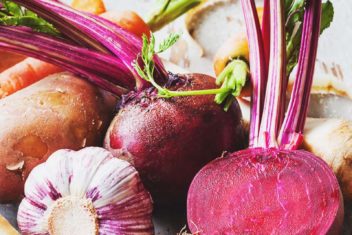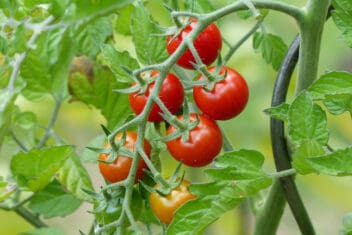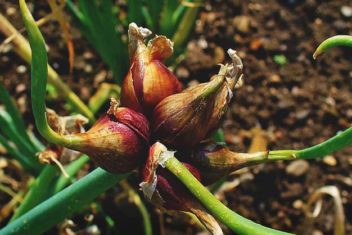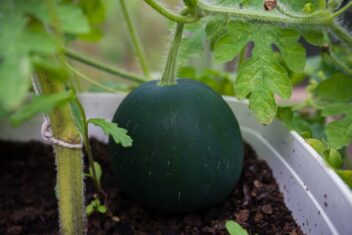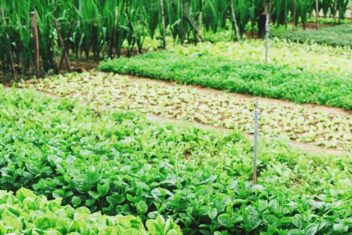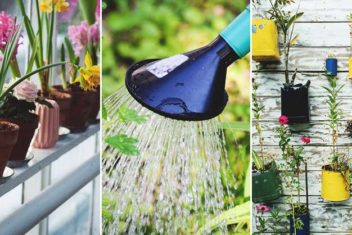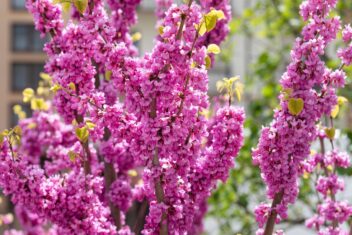You’re not a real gardener unless you’ve successfully grown tomatoes. That’s how I suspect some green-thumbed folks feel. So if you’ve struggled to get your tomato plants to thrive, you may be wondering what you did wrong. While there are plenty of culprits for a lackluster tomato harvest, perfecting your tomato fertilizer routine is an essential part of growing healthy plants. Too much of the wrong nutrients and you won’t get many fruits. Not enough and you’ll have a stunted, anemic plant.
Our tomato fertilizer guide will help you enjoy the awesomeness of a fresh picked garden tomato without worrying about nutrient-deficiencies and related problems. Below, you’ll find out about tomato nutrient requirements, tips on fertilizing, and a handy “dos and don’ts” section for quick reference.
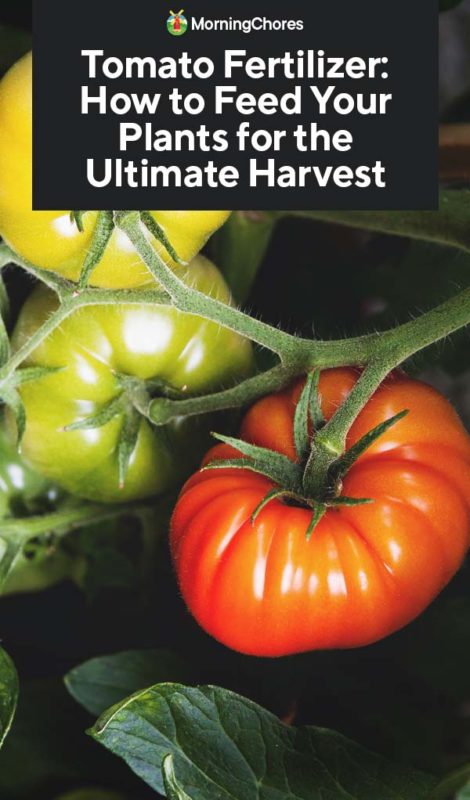
Nutrient Requirements of Tomatoes
Like all plants, tomatoes require three main macronutrients: nitrogen, phosphorus, and potassium, otherwise known as NPK. Different plants, tomatoes included, require different amounts of each nutrient.
For all plant life, nitrogen allows for thick, full leaf growth. Phosphorus is required for blossom (and thus fruit) to form. Potassium is necessary for healthy root growth.
Tomatoes need all three, but in the wrong combination you might end up with leafy growth and no fruit. Tomatoes are heavy feeders, and they need plenty of nutrients to thrive throughout the season.
Ideal fertilizer for tomatoes
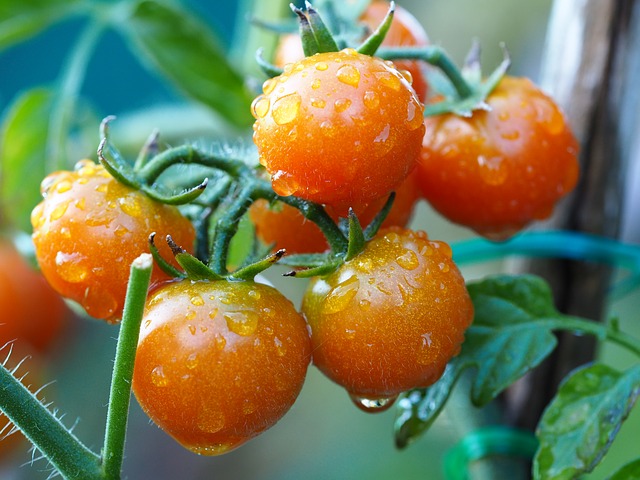
Before you start liberally sprinkling fertilizer all over your garden, get a soil test. Adding fertilizer without knowing the nutrient composition of your soil may lead to over-fertilizing, which is wasteful and may cause growth issues.
Ready to start fertilizing? If all is well with your soil – meaning your nutrients are balanced – go ahead and purchase a fertilizer that contains slightly more phosphorus and potassium than nitrogen.
Does your soil need an infusion of nitrogen? An ideal tomato fertilizer in this situation is one that is balanced, not high in nitrogen. The reason? Too much nitrogen may cause your plants to grow lots of leafy green foliage without many blossoms and fruit.
The biggest tip to follow is to avoid high concentrations of nitrogen when choosing a fertilizer, which will help you avoid tall plants without fruit set.
Consider Your Soil
Fertilizing isn’t only about adding your nutrients and moving on. It’s important to consider the pH level and condition of your soil, as well. In thick rocky or clay soils, your plants may have trouble accessing required nutrients. It may be wise to work on conditioning the soil before adding nutrients. Adding compost and organic amendments can help improve the overall health and condition of the earth.
Fertilizer Types
Wondering which form of fertilizer is ideal for tomatoes? It largely depends on your preference. Each has its benefits and drawbacks.
Granules are probably the most convenient type of fertilizer. All you need to do is sprinkle the mini pebbles around the base of your plants. As it rains or you water your plants, the granules release nutrients into your soil. For extended fertilizing, choose slow release formulas, which release nutrients over a longer period than water-soluble products. Water-soluble fertilizers dissolve quickly, but it’s also easier to over-fertilize with this type of fertilizer.
Liquid fertilizers are another option for feeding your hungry tomato plants. Typically, liquid formulas must be diluted to prevent burning and harming plants.
When purchasing fertilizer for your tomatoes, it’s essential to pay attention to the numbers featured on the product labels. They represent the ratio and concentration of each macronutrient in the order NPK (Nitrogen, Phosphorous, Potassium).
A fertilizer with an NPK ratio of 15-10-10 contains 10% phosphorous and potassium and 15% nitrogen, which means it contains a higher concentration of one nutrient. What’s the other 65%? The rest is filler to create bulk. Though some fertilizers also contain some micronutrients like calcium and sulfur.
When to Use Tomato Fertilizer
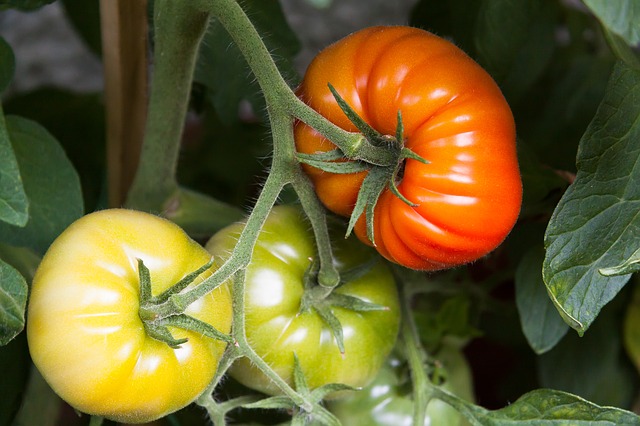
Timing is critical when using tomato fertilizer. I like to amend the soil as soon as I transplant my starts into the garden. I mix in compost and earthworm castings into the hole where I’ll be planting my seedlings.
The next time you fertilize should be when fruit begins to set. Depending on the results of your soil test, choose either a balanced fertilizer or one with slightly less nitrogen than other macronutrients.
After this, I side dress my tomatoes with a mix of compost and earthworm castings until the season is over with. Some people like to fertilize their tomatoes throughout the season at 1 or 2-week intervals. I’m a little more laissez-faire and add compost around the base of my plants every 3-4 weeks.
Watch Out for Over Fertilization
Too much fertilizer will stress your plants and in severe cases may even kill them. Unfortunately, many of the signs of over-fertilization mimic those of nutrient defiance. Don’t make assumptions when checking on the status of your garden plants.
Yellowing and wilting of leaves, low fruit output, leaf drop, and blossom drop are all signs that there’s something wrong, but get a soil test to verify the cause.
The Dos and Don’ts of Tomato Fertilizer
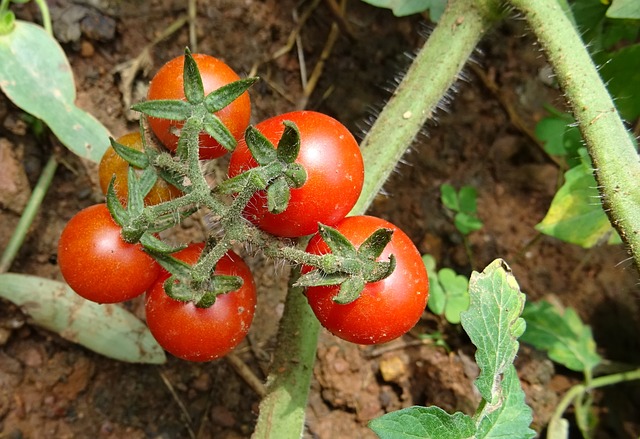
Do Water Regularly
Regular, even waterings are vital for the health of your tomato plants. Improper and uneven watering is likely to stress your plants and can prevent proper nutrient uptake. Often, nutrient deficiencies in tomatoes and other plants are actually the result of poor watering habits. Without access to water, your plants can’t easily access nutrients in the soil.
Don’t Overwater After Fertilizing
Leaving your tomatoes parched until you fertilize them may cause your plants to take in too many nutrients too quickly, which is not ideal. Too much fertilizer can stress your plants. Instead, make sure your plants are well watered before beginning the fertilization process.
Don’t Bother With Eggshells
If you spot blossom end rot on your tomatoes, don’t assume that your soil is deficient in calcium. Adding eggshells isn’t likely to solve the problem. Why? First off, eggshells break down extremely slowly and are unlikely to add any significant amount of calcium to your soil. Second, consider your watering habits. Have you been watering your plants sporadically? If that’s the case, your tomatoes may have had trouble accessing calcium in the soil.
If you’re noticing blossom end rot is a problem plaguing your tomato plants, it may not be a lack of calcium that’s the problem. Check that you’re watering enough and evenly.
Don’t Forget to Fertilize Container Tomatoes
Potting soil only goes so far, and your container plants may even require more frequent fertilizing than plants in raised beds or in the ground.
Don’t Ignore Micronutrient Needs
All plants also need micronutrients to survive. A soil test can help you determine if you need to address micronutrient deficiencies in your soil. Many fertilizers (including homemade compost) have plenty of micronutrients to help you feed your plants exactly what they need.
Don’t be Swayed by Tomato-Specific Fertilizers
Tomato-specific fertilizers aren’t necessarily bad for your garden, but they might not work for your specific needs and may not be ideal for fertilizing other plants. In some cases, it may be worthwhile to purchase a low concentration balanced fertilizer for whole garden fertilization. Some fertilizers branded as ‘tomato food’ are also overpriced.
Do Use Organic Options Whenever Possible
Organic fertilizers are an excellent choice for the home gardener. Why? They’re environmentally friendly and unlikely to contaminate nearby water sources in cases of over-fertilization. Most organic formulas aren’t concentrated at all, so it’s harder to overdo it and kill your plants by accident. This makes organic fertilizers ideal for new gardeners.
Don’t Apply Fertilizer to Tomato Leaves
Leaves can burn if you apply fertilizer directly on them, so take care to avoid getting product anywhere near your plant foliage or stems.
Do Check on Your Tomatoes Frequently
Routine garden walkthroughs are an essential part of my routine. I try to do them daily. Checking on your tomatoes (and other plants) allows you to spot problems before they worsen. Any garden problems are best addressed straight away since waiting will only cause matters to get worse.
Now you’re armed with the knowledge you need to master your tomato fertilizer routine. Let us know how it goes in the comments.

